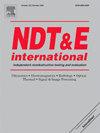Exploring technological innovations in employing structural health monitoring for glass
IF 4.1
2区 材料科学
Q1 MATERIALS SCIENCE, CHARACTERIZATION & TESTING
引用次数: 0
Abstract
The implementation of structural health monitoring (SHM) for glass structures is still at an early stage of development. Limited information can be found in existing literature regarding the use of SHM on glass elements. However, recent technological advancements have significantly improved our understanding in this area. Both SHM and the utilization of laminated glasses (LGs) for structural purposes are relatively new concepts with a short history. To conduct a comprehensive assessment of glass elements, it is crucial to have a solid understanding of both glass and SHM sciences. This research aims to explore various approaches for implementing SHM on structural glass elements, with a specific focus on the utilization of artificial intelligence (AI) and machine learning (ML) techniques. By harnessing the power of ML, the SHM system can analyze large amounts of data collected from sensors placed on glass structures. Furthermore, the application of AI in SHM can facilitate real-time monitoring, predictive maintenance, and risk assessment for glass structures. The findings emphasize the critical role of early detection in preventing damage to glass elements and demonstrate the effectiveness of SHM in achieving this objective. The use of AI features, such as ML, presents promising opportunities for advancing the capabilities of SHM in the structural glass domain. The incorporation of AI features, such as ML algorithms, could offer additional advantages in this field.
探索玻璃结构健康监测的技术创新
玻璃结构结构健康监测(SHM)的实施仍处于早期发展阶段。现有文献中关于SHM在玻璃元素上的应用的信息有限。然而,最近的技术进步大大提高了我们对这一领域的理解。SHM和夹层玻璃(LGs)用于结构目的都是相对较新的概念,历史较短。为了对玻璃元素进行全面的评估,对玻璃和SHM科学有一个坚实的理解是至关重要的。本研究旨在探索在结构玻璃元件上实现SHM的各种方法,特别关注人工智能(AI)和机器学习(ML)技术的利用。通过利用机器学习的力量,SHM系统可以分析从放置在玻璃结构上的传感器收集的大量数据。此外,人工智能在SHM中的应用可以促进玻璃结构的实时监测、预测性维护和风险评估。研究结果强调了早期检测在防止玻璃元素损坏方面的关键作用,并证明了SHM在实现这一目标方面的有效性。人工智能功能的使用,如机器学习,为推进SHM在结构玻璃领域的能力提供了有希望的机会。人工智能功能的结合,如机器学习算法,可以在这一领域提供额外的优势。
本文章由计算机程序翻译,如有差异,请以英文原文为准。
求助全文
约1分钟内获得全文
求助全文
来源期刊

Ndt & E International
工程技术-材料科学:表征与测试
CiteScore
7.20
自引率
9.50%
发文量
121
审稿时长
55 days
期刊介绍:
NDT&E international publishes peer-reviewed results of original research and development in all categories of the fields of nondestructive testing and evaluation including ultrasonics, electromagnetics, radiography, optical and thermal methods. In addition to traditional NDE topics, the emerging technology area of inspection of civil structures and materials is also emphasized. The journal publishes original papers on research and development of new inspection techniques and methods, as well as on novel and innovative applications of established methods. Papers on NDE sensors and their applications both for inspection and process control, as well as papers describing novel NDE systems for structural health monitoring and their performance in industrial settings are also considered. Other regular features include international news, new equipment and a calendar of forthcoming worldwide meetings. This journal is listed in Current Contents.
 求助内容:
求助内容: 应助结果提醒方式:
应助结果提醒方式:


